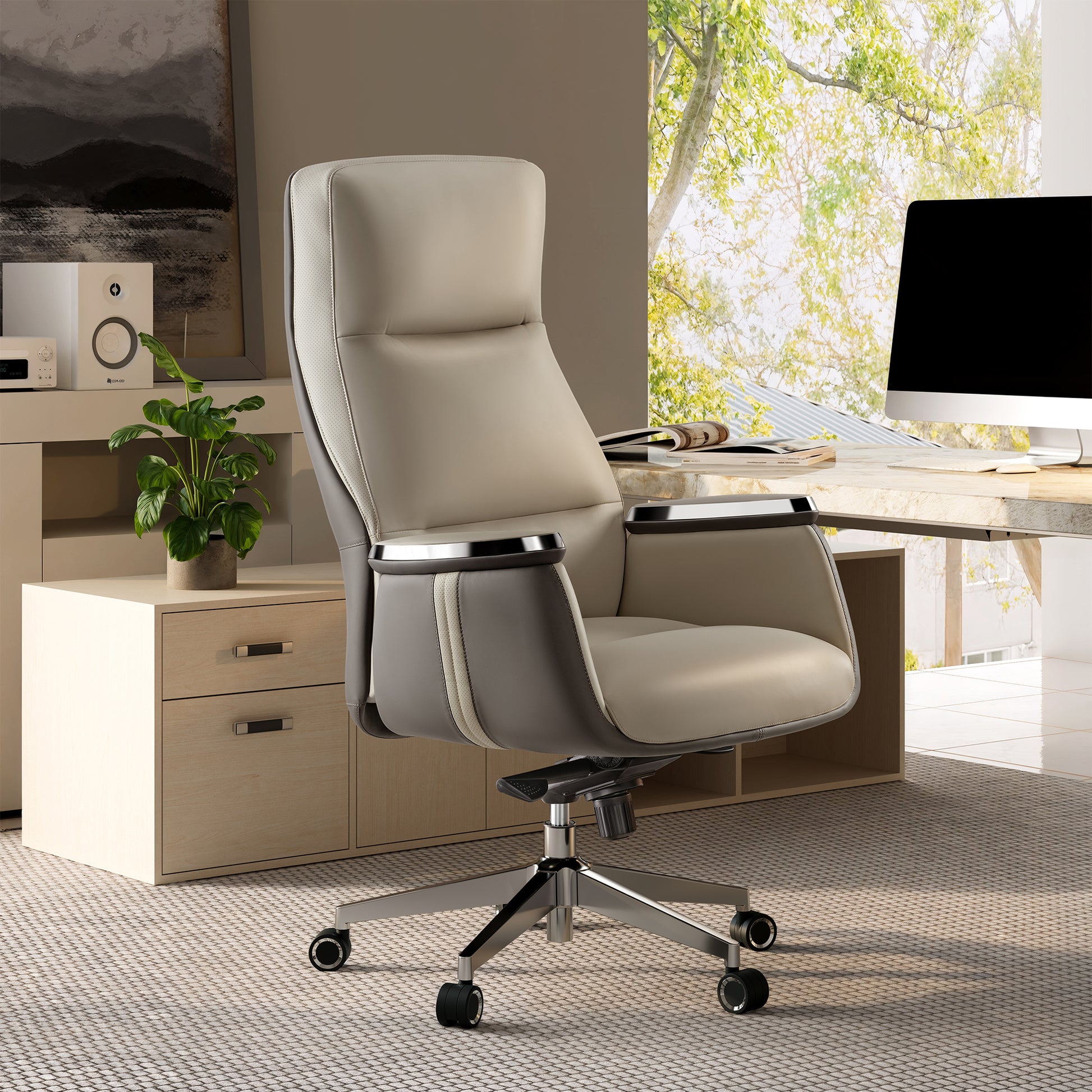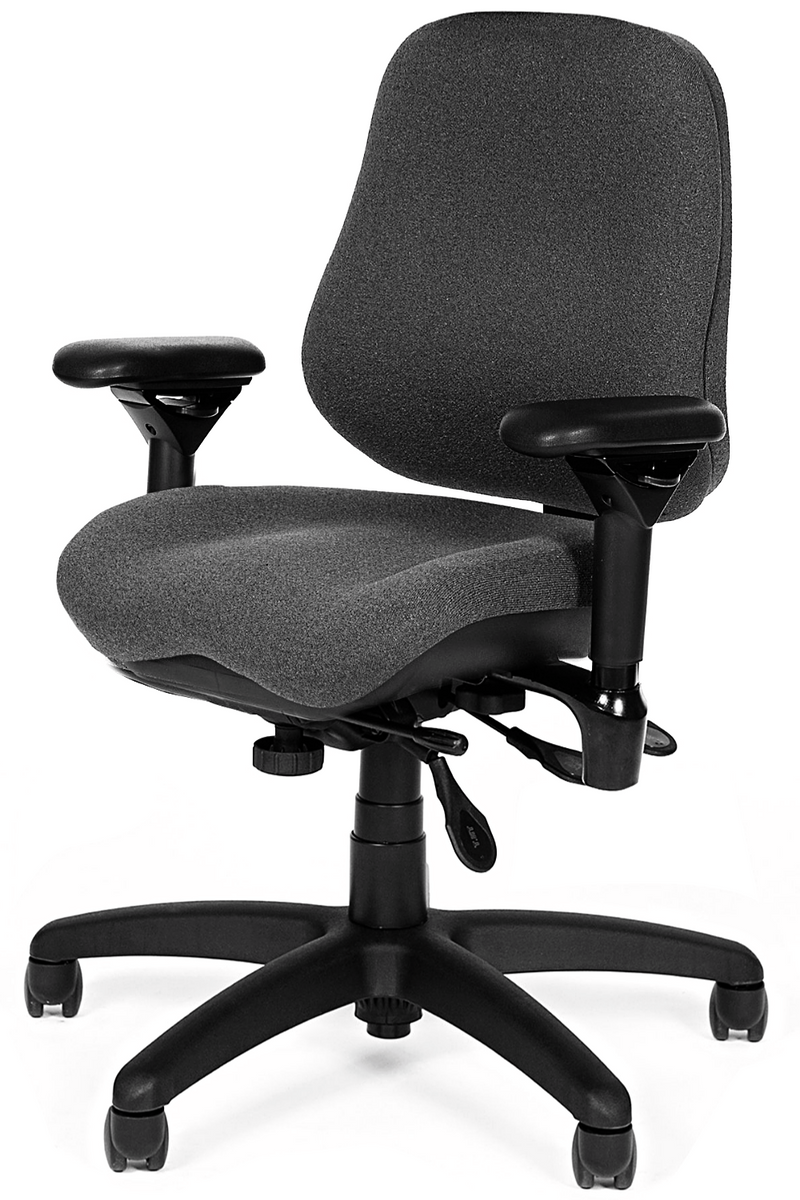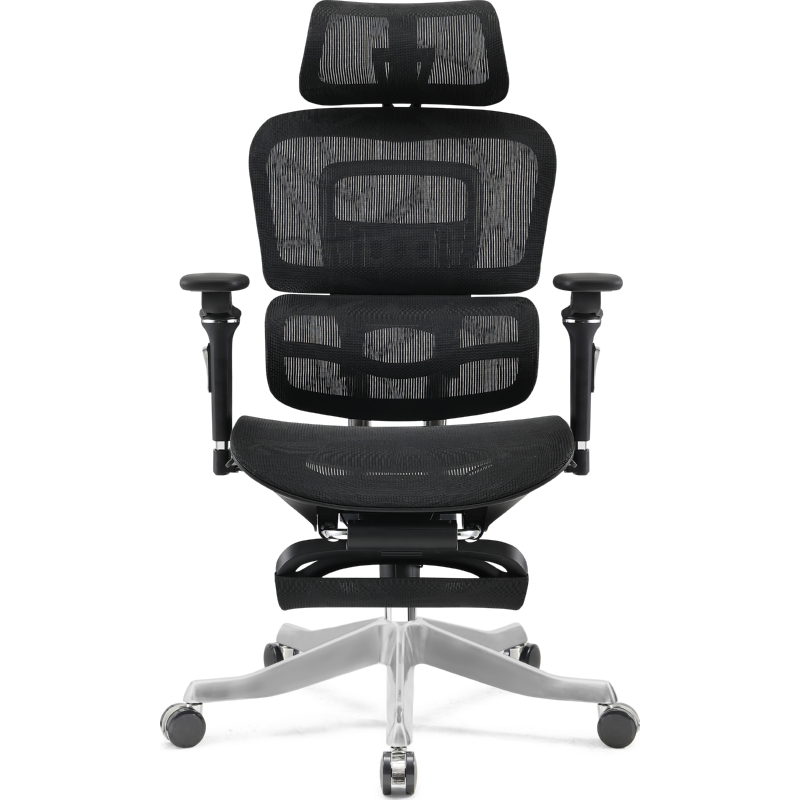Discover how an Ergonomic Office Chair can upgrade your daily workspace experience
Wiki Article
Discover the Essential Functions of an Ergonomic Workplace Chair That You Ought To Think about
Choosing the best ergonomic workplace chair is essential for any person costs lengthy hours at a desk. Secret attributes such as flexible seat elevation, back assistance, and armrest adjustability can substantially affect comfort and position. Comprehending the relevance of seat deepness and worldly quality also plays a basic role in general complete satisfaction. Many ignore other essential facets. What added elements should be thought about to assure peak efficiency and well-being in the work area?Adjustable Seat Elevation
When selecting an ergonomic workplace chair, flexible seat elevation is a crucial feature that substantially improves comfort and functionality. This particular allows customers to customize the chair's height to their private demands, making certain that their feet remainder flat on the floor while their knees remain at a 90-degree angle. Appropriate seat height contributes to ideal position, minimizing strain on the legs and reduced back throughout prolonged periods of sitting.
Additionally, flexible seat height accommodates a diverse series of type of body and workdesk arrangements, making it a functional option for both home and workplace setups. The convenience of change generally includes a basic bar system, permitting customers to change the height with very little initiative. This feature is especially helpful in common workspaces, where multiple people might make use of the same chair. Eventually, spending in an ergonomic workplace chair with flexible seat height is vital for advertising overall well-being and performance in the work environment.
Lumbar Assistance
Lumbar support is a crucial function in ergonomic workplace chairs, as it aids keep the natural contour of the back and lowers the risk of neck and back pain. Adjustable back assistance enables individuals to personalize the degree of support according to their specific demands, promoting better posture throughout the day. This flexibility not just improves convenience but likewise adds to overall efficiency and wellness.Relevance of Lumbar Assistance
Appropriate back support is important for preserving a healthy and balanced position during long hours of resting - Ergonomic Office Chair. The lumbar area of the spine is naturally curved, and without sufficient support, this curve can squash, resulting in discomfort and pressure. Not enough lumbar assistance can cause a range of problems, consisting of lower pain in the back, muscular tissue exhaustion, and reduced performance. When a workplace chair offers proper lumbar support, it assists to line up the spine, minimizing the chance of developing bone and joint problems. This assistance encourages the customer to sit back in the chair, promoting engagement of the core muscles and boosting overall comfort. Selecting an ergonomic chair with suitable back support is necessary for individuals who spend prolonged periods at their desks.Flexible Lumbar Characteristics
Flexible lumbar attributes are essential in enhancing the efficiency of workplace chairs developed for prolonged resting. These attributes allow users to tailor the height, depth, and firmness of the back assistance to align with their distinct spine contours. Correct back assistance reduces pain and promotes healthy and balanced posture, lowering the risk of back discomfort linked with prolonged workdesk work. When selecting a workplace chair, it is essential to search for choices that offer simple changes, enabling individuals to find their ideal assistance degree. In addition, some chairs include memory foam or breathable products, improving comfort during lengthy hours. On the whole, adjustable lumbar functions greatly contribute to a more ergonomic office, cultivating productivity and wellness among individuals.Seat Deepness and Size

Ideal Seat Measurements
Locating the right balance in seat dimensions is necessary for convenience and support in an ergonomic office chair. A suitable seat size generally ranges from 18 to 22 inches, fitting different body kinds while keeping convenience of movement. Seat depth is equally essential, with a suggested depth of 16 to 18 inches, enabling individuals to rest easily without really feeling limited. Correct seat measurements assure that the upper legs are properly supported while leaving a small gap between the back of the knees and the seat side, promoting circulation. Furthermore, the seat needs to allow customers to maintain an all-natural stance, decreasing the threat of strain. Generally, choosing the appropriate seat dimensions is essential for boosting performance and wellness during long hours of sitting.Adjustability for Convenience

Impact on Posture
Correct seat deepness and width significantly influence posture, as they straight impact how a user straightens their body while seated. A perfect seat depth allows the thighs to relax totally on the chair without extreme stress at the rear of the knees, advertising blood circulation and convenience. If the seat is unfathomable, it can bring about slouching, while a seat that is also superficial might not give sufficient assistance. Similarly, the width of the seat ought to accommodate the customer easily, permitting natural arm placing without constraint. A chair that supports a neutral back setting urges much better stance, minimizing strain on the back and neck. As a result, selecting the ideal seat dimensions is critical for preserving healthy pose during long term sitting.Armrest Adjustability
Armrest adjustability plays an important role in enhancing individual comfort and assistance during long term periods of sitting. Ergonomic workplace chairs often feature armrests that can be relocated in numerous instructions-- up and down, side to side, and even pivoted. This versatility permits customers to locate the perfect height and angle, minimizing pressure on the shoulders and neck. Correct armrest placing can additionally alleviate pressure on the wrists, promoting better hand positioning when typing or using a mouse. Furthermore, flexible armrests fit various body kinds and individual choices, ensuring that each user can achieve a customized fit. Fixed armrests may lead to discomfort and fatigue, particularly throughout prolonged use, whereas adjustable options provide the adaptability required for dynamic work environments. Therefore, when picking an ergonomic workplace chair, taking into consideration armrest adjustability is crucial for general comfort and productivity at job.Back-rest Recline and Tilt
Backrest recline and tilt attributes substantially add to an ergonomic office chair's overall support and convenience. These devices enable users to readjust the angle of the back-rest, giving suitable spine placement and minimizing pressure on the reduced back. A chair with a proper recline feature makes it possible for people to shift their stance throughout the day, advertising better blood circulation and minimizing fatigue.The tilt feature urges dynamic activity, enabling customers visit this site to engage their core muscular tissues while seated. This versatility is essential for keeping focus and efficiency during lengthy hours of job. Chairs that use a large range of recline angles accommodate different choices, fitting both upright seats for jobs and a more kicked back setting for breaks.
Material and Construct Quality
The choice of product and construct top quality is vital in determining the check it out durability and convenience of an ergonomic workplace chair. Top notch materials, such as breathable mesh or resilient textile, enhance ventilation, supplying a comfy seating experience during long hours of usage. The structure should ideally be created from robust materials like steel or enhanced plastic, ensuring stability and assistance.In addition, the quality of foam utilized in supporting substantially affects convenience degrees; memory foam adapts to body contours, using personalized support while lowering pressure points. An ergonomic chair must also feature a well-designed structure that enables for adjustments, making certain that customers can personalize the fit to their individual needs.
The build top quality ought to consist of tough wheels and a trustworthy gas lift system for smooth elevation modifications. Investing in a chair with remarkable materials and develop high quality inevitably adds to better pose, performance, and total health in the workplace.
Regularly Asked Inquiries


Exactly how Do I Choose the Right Chair for My Body Kind?
To select Clicking Here the ideal chair for one's body type, one should evaluate seat height, lumbar support, seat deepness, and armrest positioning. Testing numerous designs guarantees comfort and appropriate positioning, inevitably promoting much better pose and wellness.Are Ergonomic Chairs Ideal for Brief or High Individuals?
Ergonomic chairs can be ideal for both tall and brief people, given they provide adjustable features such as seat height, backrest, and armrests. This flexibility warranties comfort and assistance for various type of body and sizes.Can I Utilize an Ergonomic Chair With a Standing Desk?
Yes, an ergonomic chair can be used with a standing desk. It provides flexibility for alternating between sitting and standing, advertising much better pose and comfort throughout the day, eventually boosting performance and lowering tiredness.How Frequently Should I Adjust My Chair Setups?
Adjusting chair setups must happen frequently, ideally every couple of hours or when experiencing pain. Constant adjustments advertise much better position and convenience, improving efficiency and decreasing stress throughout prolonged durations of sitting. Uniformity is vital for excellent comfort designs.What Is the Ordinary Life Expectancy of an Ergonomic Office Chair?
The typical life-span of an ergonomic office chair normally varies from seven to 10 years, relying on use, materials, and upkeep. Normal treatment can prolong its long life, making certain excellent support and comfort throughout its life.When selecting an ergonomic office chair, flexible seat elevation is an important attribute that significantly improves comfort and use. Seat deepness and size are necessary elements in establishing the overall comfort of an ergonomic workplace chair. Finding the appropriate equilibrium in seat measurements is vital for convenience and support in an ergonomic workplace chair. While convenience is extremely important in an ergonomic office chair, the capability to change seat deepness and size plays a necessary role in suiting specific preferences and body types. To choose the best chair for one's body type, one need to analyze seat elevation, back assistance, seat deepness, and armrest positioning.
Report this wiki page